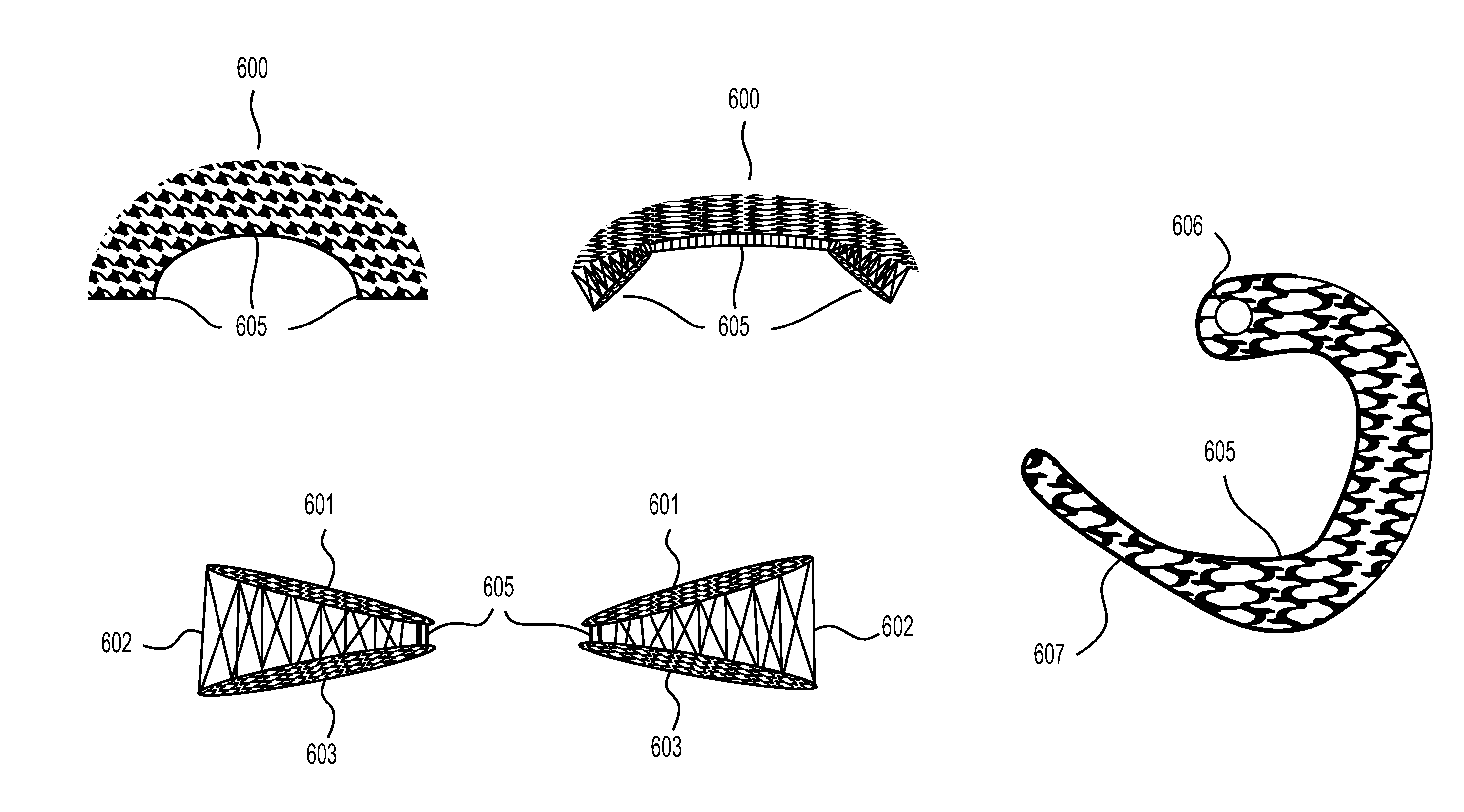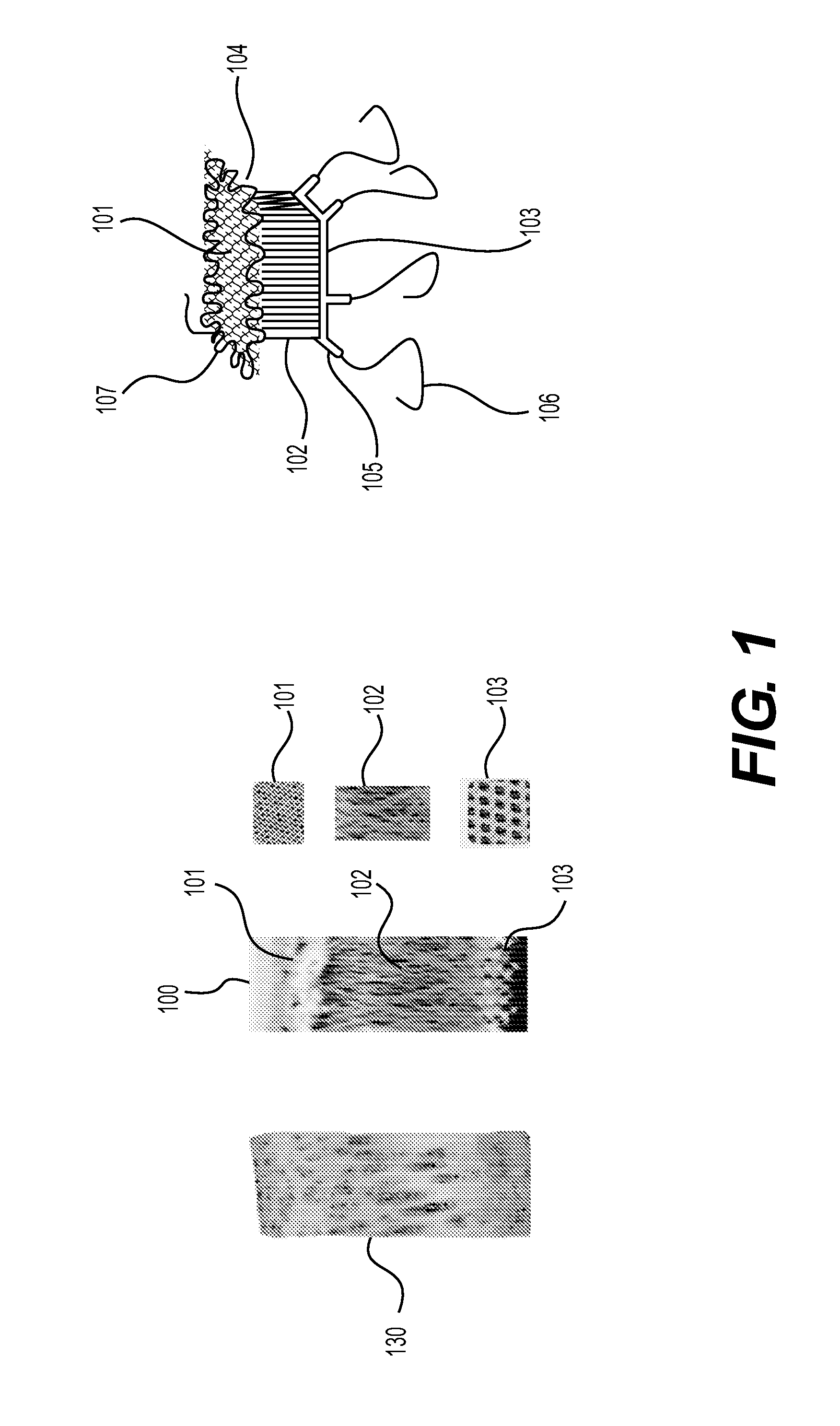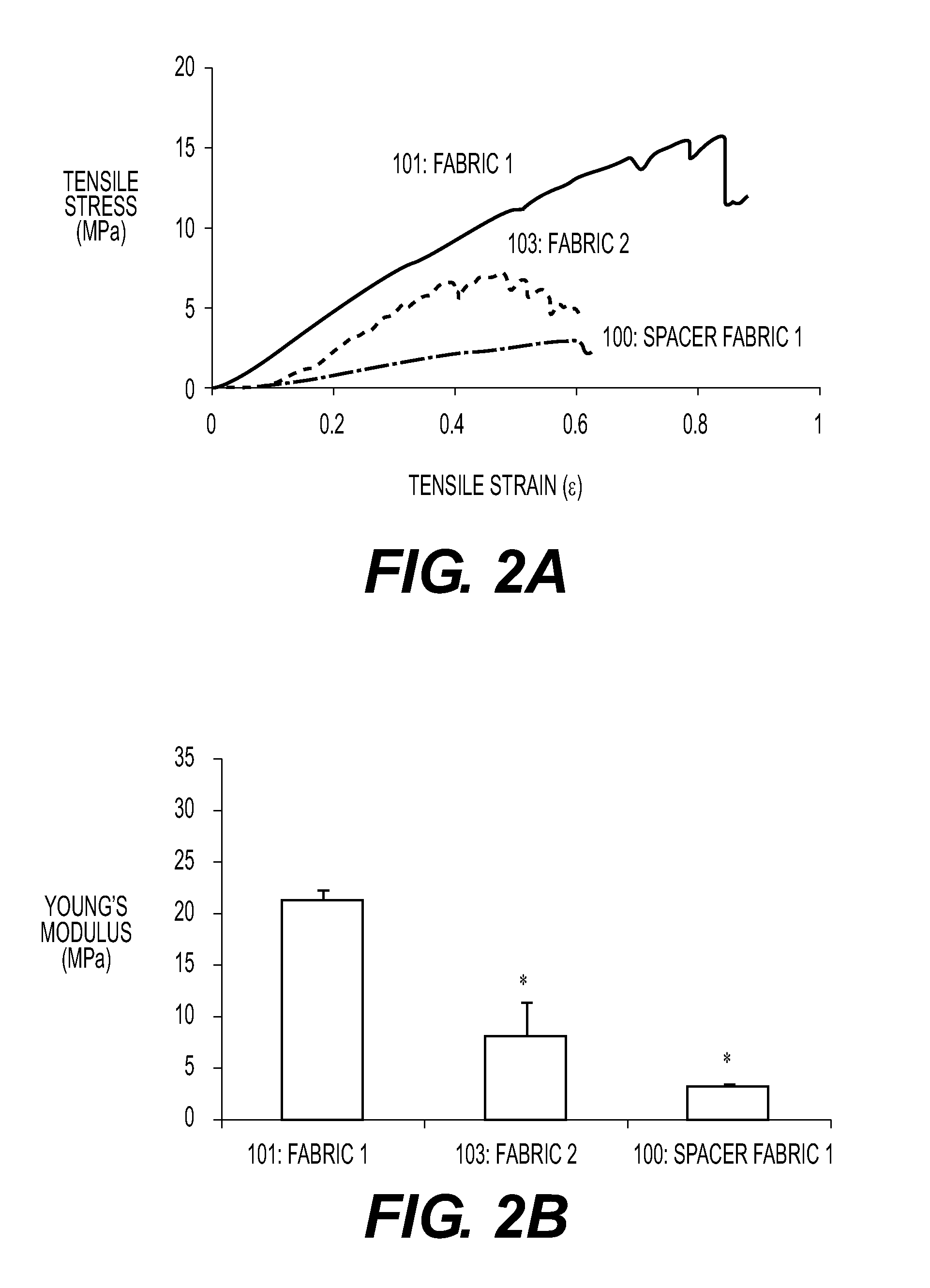Implantable Devices for Musculoskeletal Repair and Regeneration
- Summary
- Abstract
- Description
- Claims
- Application Information
AI Technical Summary
Benefits of technology
Problems solved by technology
Method used
Image
Examples
embodiments of invention
Embodiment 1
[0044]An implantable device for the replacement or repair of musculoskeletal tissue, comprising:
a first fabric,
a second fabric,
and a plurality of spacer elements connecting the first fabric to the second fabric, wherein the first fabric and the second fabric define an interfabric space.
embodiment 2
[0045]The implantable device of embodiment 1, wherein the first fabric and second fabric are substantially planar and substantially parallel.
embodiment 3
[0046]The implantable device of any of embodiments 1-2, wherein the first fabric, the second fabric, or both, are formed by weaving, knitting, or a combination thereof
PUM
 Login to View More
Login to View More Abstract
Description
Claims
Application Information
 Login to View More
Login to View More - R&D
- Intellectual Property
- Life Sciences
- Materials
- Tech Scout
- Unparalleled Data Quality
- Higher Quality Content
- 60% Fewer Hallucinations
Browse by: Latest US Patents, China's latest patents, Technical Efficacy Thesaurus, Application Domain, Technology Topic, Popular Technical Reports.
© 2025 PatSnap. All rights reserved.Legal|Privacy policy|Modern Slavery Act Transparency Statement|Sitemap|About US| Contact US: help@patsnap.com



